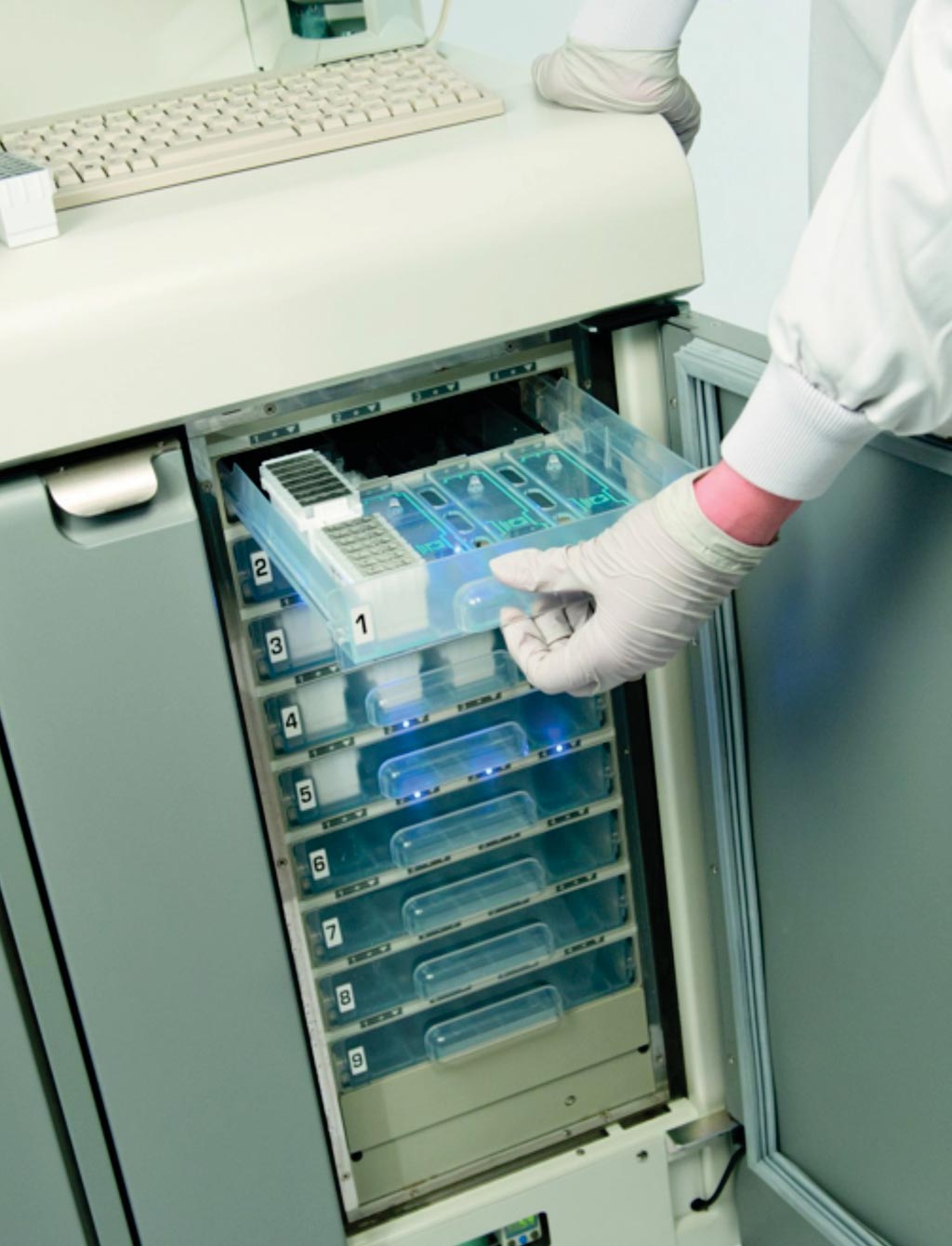Automated Test Screens for HTLV-I/II Viruses
By LabMedica International staff writers
Posted on 04 May 2017
Human T-lymphotropic viruses, type I (HTLV-I) and type II (HTLV-II), were the first human retroviruses discovered and are closely related but distinct retroviruses that can infect humans. HTLV-I is known to cause a type of cancer, referred to as adult T-cell leukemia and lymphoma, and a demyelinating disease called HTLV-I associated myelopathy/Tropical spastic paraparesis (HAM/TSP).Posted on 04 May 2017
HTLV-II has been associated with rare lymphoproliferative diseases and neurodegenerative disorders, although it’s etiological role remains to be fully established. It is estimated that 15-20 million people are currently infected with HTLV-I worldwide. HTLV-I is endemic in the Caribbean, Japan, South America, and parts of Africa. HTLV-II is found among Native Americans and injection drug users in many cities of Western Europe and North America.

Image: The Lumipulse G HTLV-I/II chemiluminescent enzyme immunoassays loaded into LUMIPULSE G system (Photo courtesy of Fujirebio Europe).
Transmission of both HTLV I and II occurs through sexual contact, exposure to blood, transfusion of infected cellular blood components and perinatal, probably by breast feeding. The screening of antibodies against HTLV-I/II is an aid in the diagnosis of HTLV infection and is aimed at curbing the risk of transmitting the infection.
The Lumipulse G HTLV-I/II a Conformité Européenne (CE)-marked chemiluminescent enzyme immunoassay (CLEIA) test kit has been launched. The test kit is for in vitro diagnostic use with the LUMIPULSE G system for the qualitative detection of antibody to HTLV-I and HTLV-II in human serum or plasma for screening of HTLV-I/II viral infection. The assay utilizes proven CLEIA technology with results that are available in up to 35 minutes.
Christiaan De Wilde, MSIM, CEO of Fujirebio Europe, said, “I'm proud to say that our Lumipulse G HTLV-I/II assay exhibits both a sensitivity and a specificity sufficient to place it among the best HTLV assays available today. The cost-effective and convenient cartridge format of the test further adds to its appeal.”














